Many people have heard of high blood pressure, but fewer talk about low blood pressure. However, low blood pressure can also lead to various health problems and may even be a sign of other underlying conditions. However, low blood pressure can also lead to various health problems and may even be a sign of other underlying conditions.
This article delves into how to recognise and prevent low blood pressure, and demonstrates how yoga can serve as a complementary therapy to help regulate This article delves into how to recognise and prevent low blood pressure, and demonstrates how yoga can serve as a complementary therapy to help regulate blood pressure and improve quality of life.
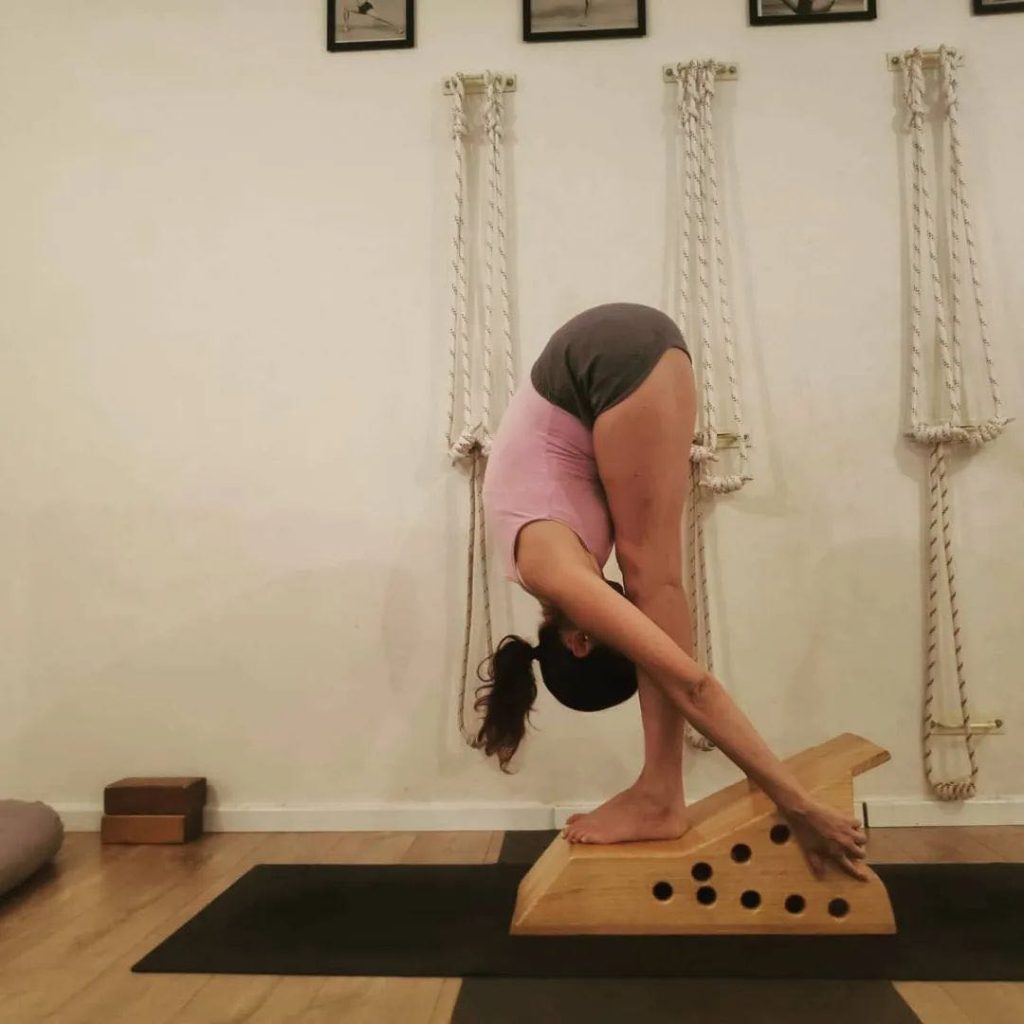
Recognising and Addressing Low Blood Pressure
Some people are naturally predisposed to low blood pressure without experiencing symptoms. However, for others, it could be an indicator of a potential health issue. However, for others, it could be an indicator of a potential health issue.
Low blood pressure refers to the force of blood flowing through the arteries being lower than normal. This condition reduces the blood supply to the brain, meaning the heart, brain, and other parts of the body may not receive adequate blood, often leading to fatigue, intermittent dizziness, cold and clammy. meaning the heart, brain, and other parts of the body may not receive adequate blood, often leading to fatigue, intermittent dizziness, cold and clammy skin, lightheadedness, blurred vision, or nausea. This condition reduces the blood supply to the brain, meaning the heart, brain, and other parts of the body may not receive adequate blood, often leading to fatigue, intermittent dizziness, cold and clammy skin, lightheadedness, blurred vision, or nausea.
Types of Low Blood Pressure
- Orthostatic HypotensionThis can cause dizziness or lightheadedness and is more common in older adults, increasing their risk of fractures and dementia, which can severely affect the quality of life. This can cause dizziness or lightheadedness and is more common in older adults, increasing their risk of fractures and dementia, which can severely affect quality of life.
- Pregnancy: During pregnancy, the increased blood demand from both the mother and the fetus can cause low blood pressure, posing risks for fetal growth restriction and low birth weight. During pregnancy the increased blood demand from both the mother and the fetus can cause low blood pressure, posing risks for fetal growth restriction.
- Postprandial Hypotension: This occurs after eating and is more common among the elderly or those with autonomic nervous system disorders.
- Neurally Mediated Hypotension: Occurs when there's an abnormal reflex interaction between the heart and brain, often triggered by standing in one position for too long. This condition is more common in children than in adults.
- Emotional Shock: Intense emotions like fear or shock can cause low blood pressure. Some people experience this during medical or dental treatments.
- ShockSevere injury or infection may lead to shock, during which organs don't get enough blood and oxygen. If untreated, severe low blood pressure can be life-threatening. If untreated, severe low blood pressure can be life-threatening.
- MedicationsBeta-blockers and nitroglycerin for heart conditions, diuretics, tricyclic antidepressants, and medications for erectile dysfunction can also lead to low blood pressure.
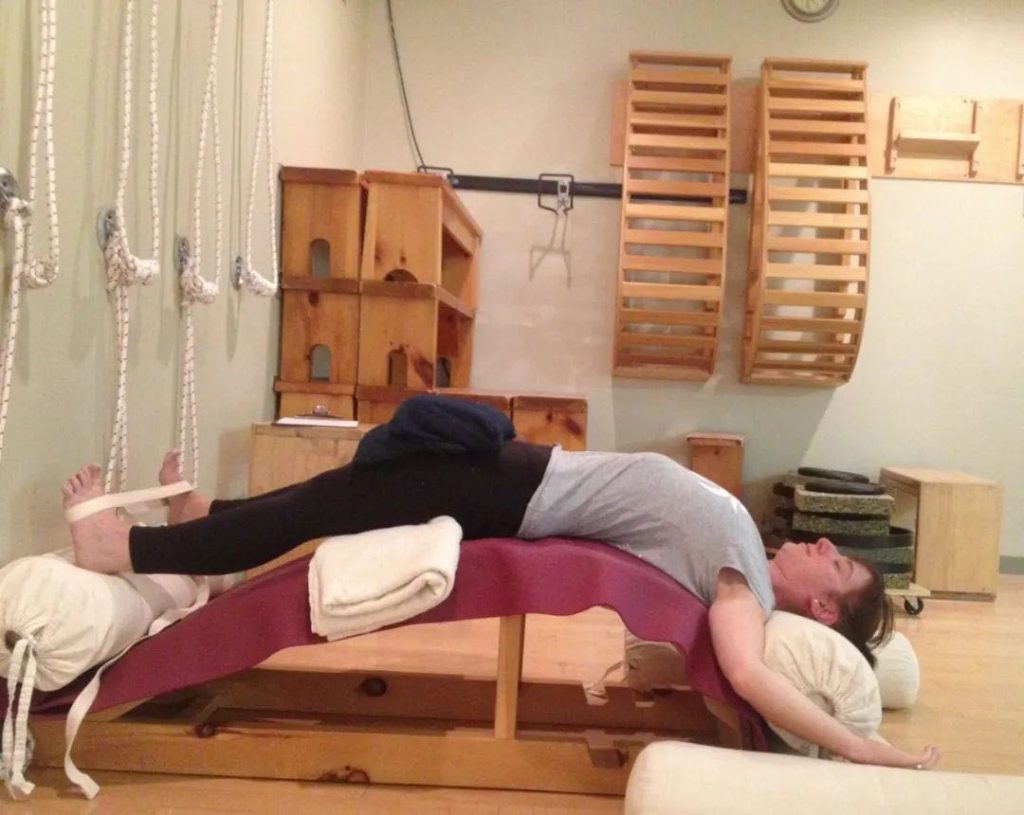
Daily Tips for Managing Low Blood Pressure
If you have low blood pressure, the first step is to see a doctor, who may suggest lifestyle changes to identify the underlying cause.
- Stay HydratedEven mild dehydration can cause low blood pressure. Vomiting, diarrhea, fever, intense exercise, or excessive sweating can all lead to dehydration.
- Balanced Diet: Low levels of vitamin B12, folic acid, and iron can cause anemia, which may lead to low blood pressure.
- Eat Smaller MealsPost-meal hypotension is common in older adults. Eating smaller, more frequent meals, and limiting carbohydrate intake can help stabilize blood pressure after eating.
- Avoid Alcohol: Alcohol can cause dehydration and interact with medications, leading to low blood pressure.
- Increase Salt IntakeSodium can help raise blood pressure, but it's important to consult with a doctor as too much sodium can lead to hypertension and heart disease. disease.
- Monitor Blood Sugar: Diabetes and high blood sugar levels can lead to low blood pressure due to increased urination.
- Check Thyroid HealthHypothyroidism, or an underactive thyroid, can lead to low blood pressure.
- Wear Compression Garments: Items like compression socks, tights, or abdominal bands help improve blood circulation and can alleviate orthostatic hypotension.
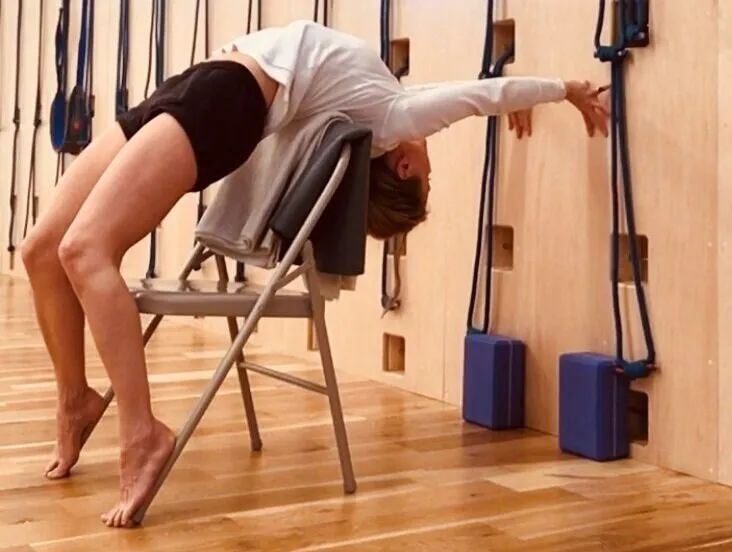
9 . Cross Your Legs: Sitting with legs crossed can help raise blood pressure.
10. Exercise RegularlyPhysical activity like rowing, cycling, swimming in cool temperatures, or practicing yoga can improve cardiovascular health and help regulate blood pressure. Always consult a healthcare professional before starting any exercise routine.
11. Avoid Hot Showers: Hot water can cause blood vessels to dilate, leading to lower blood pressure.
12. Use Extra Pillows: Raising your head while sleeping can promote blood flow and prevent sudden changes in position.
13. Lower Shower Temperature: Hot baths or environments can trigger symptoms of orthostatic hypotension.
Yoga Practices to Improve Low Blood Pressure
Low energy, low blood pressure, lack of motivation to exercise, and cold extremities are all reasons to try the following sequence. Yoga can improve Yoga can improve circulation, relieve tension and stress, calm the brain, and help restore normal blood pressure levels.
Each of the following yoga poses, ranging from reclining poses to inversions, should be practiced at a gradual and comfortable pace. Focus on breathing rhythmically and evenly through the nose, and avoid breath-holding, as it may cause dizziness or fainting. rhythmically and evenly through the nose, and avoid breath-holding, as it may cause dizziness or fainting.
Recommended Yoga Sequence for Low Blood Pressure
Reclining Bound Angle Pose (Supta Baddha Konasana)

PropsThe yoga strap helps the practitioner maintain the bound angle with ease, and rolled blankets under the thighs relieve. The yoga strap helps the practitioner maintain the bound angle with ease, and rolled blankets under the thighs relieve pressure in the groin. The yoga strap helps the practitioner maintain the bound angle with ease, and rolled blankets under the thighs relieve pressure in the groin.
BenefitsThis deeply relaxing pose gently massages the heart, regulates blood pressure, and helps clear blocked arteries. Initially, stay in the pose for 1 minute. As practice progresses, extend the time to 5-10 minutes.
Key pointsIf any pressure is felt, replace one bolster with two. If any pressure is felt, replace one bolster with two. If there's pressure in the groin area, place folded blankets under the knees for support. If there's pressure in the groin area, place folded blankets under the knees for support.
Reclining Hero Pose (Supta Virasana)
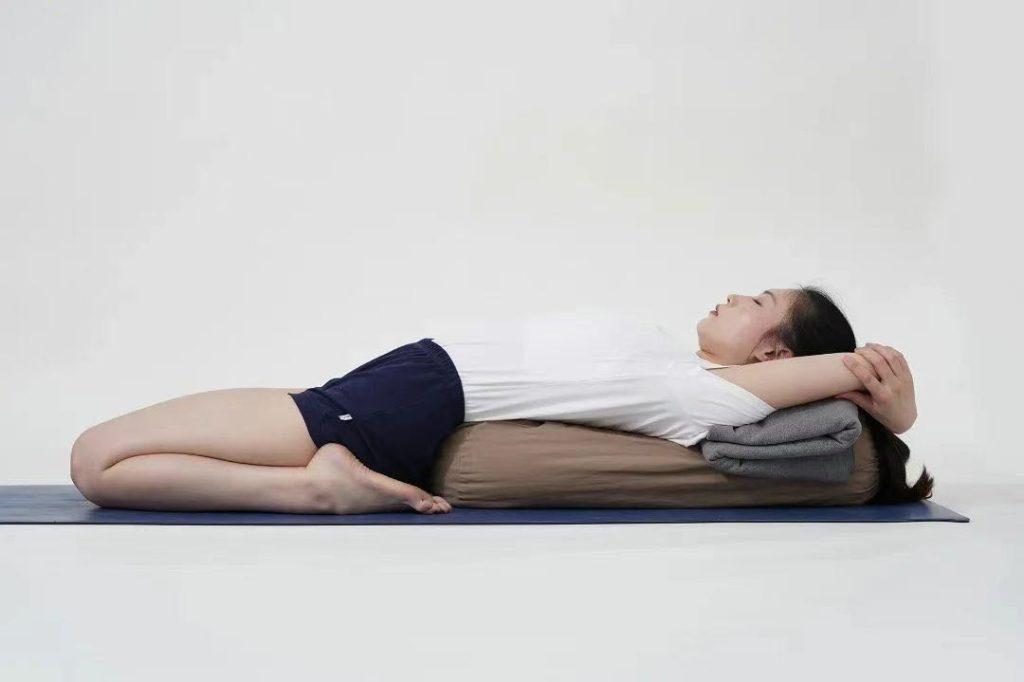
PropsIt also prevents the knees from lifting off the ground and aids in keeping the chest lifted and the torso extended. It also prevents the knees from lifting off the ground and aids in keeping the chest lifted and the torso extended. A folded blanket under the head prevents eye strain and ensures the head and neck A folded blanket under the head prevents eye strain and ensures the head and neck remain straight, without tilting to one side.
BenefitsIt gently massages and strengthens the heart, promotes coronary artery blood flow, helps prevent arterial blockages, regulates blood pressure, and relieves fatigue while boosting energy. It gently massages and strengthens the heart, promotes coronary artery blood flow, helps prevent arterial blockages, regulates blood pressure, and relieves fatigue while boosting energy. The expansion of the ribcage is particularly beneficial for the heart. Stay in the pose for 1 minute initially, gradually extending the time to 5-10 minutes with continued practice.
Key Points: If you have angina, partial arterial blockages, or are recovering from coronary artery bypass surgery, practice this pose only under the guidance of a professional yoga instructor.
Downward-Facing Dog (Adho Mukha Svanasana)

Props: A bolster or a folded blanket to support the head, which helps practitioners with a stiff back perform the pose more comfortably without strain.
Benefits: This inversion and stretching pose provides a deep stretch to the limbs, brings fresh blood to the heart and lungs, strengthens and relaxes the nervous system, calms the mind, and stabilises blood pressure and heart rate. It also enhances the overall physical condition of the body.
Key Points: If you have a stiff spine, high blood pressure, are prone to recurrent headaches, or suffer from varicose veins, always use head support when practicing Beginners should not stay in the final pose for more than 30 seconds. Gradually extend the duration to 1 minute as your practice progresses. Gradually extend the duration to 1 minute as your practice progresses.
Wide-Legged Forward Bend (Prasarita Padottanasana)

Props: A bolster or a blanket to support the head, which helps practitioners with a stiff lower back perform the final pose more effectively without tension.
Benefits: This pose deeply stretches the legs while calming both the body and the mind. It helps regulate blood pressure, bringing a sense of calm and tranquility.
Key PointsBe careful not to let the head tilt to one side or shorten the neck. Do not stay in the pose for more than 1 minute, especially if you're a beginner. Do not stay in the pose for more than 1 minute, especially if you're a beginner. If you have low blood pressure, return from the pose slowly to avoid dizziness.
Standing Forward Bend (Uttanasana)
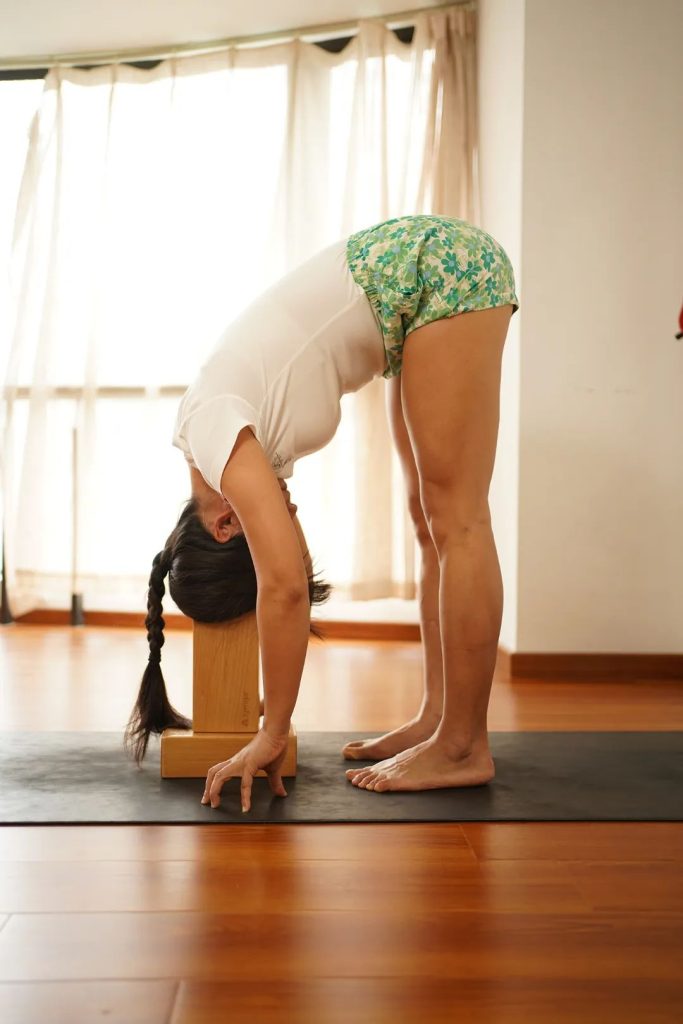
Props: One or two yoga blocks stacked at an appropriate height to support the head.
BenefitsThis pose is both calming and restorative, relaxing the heart and lungs while providing energy. It also helps regulate blood pressure.
Key PointsAvoid practicing this pose if you have knee osteoarthritis or diarrhea. Those with rheumatoid arthritis should avoid it during fevers. If you have low blood pressure, rise from the pose slowly to avoid dizziness. Hold the pose for 30-60 seconds.
Downward-Facing Hero Pose (Adho Mukha Virasana)
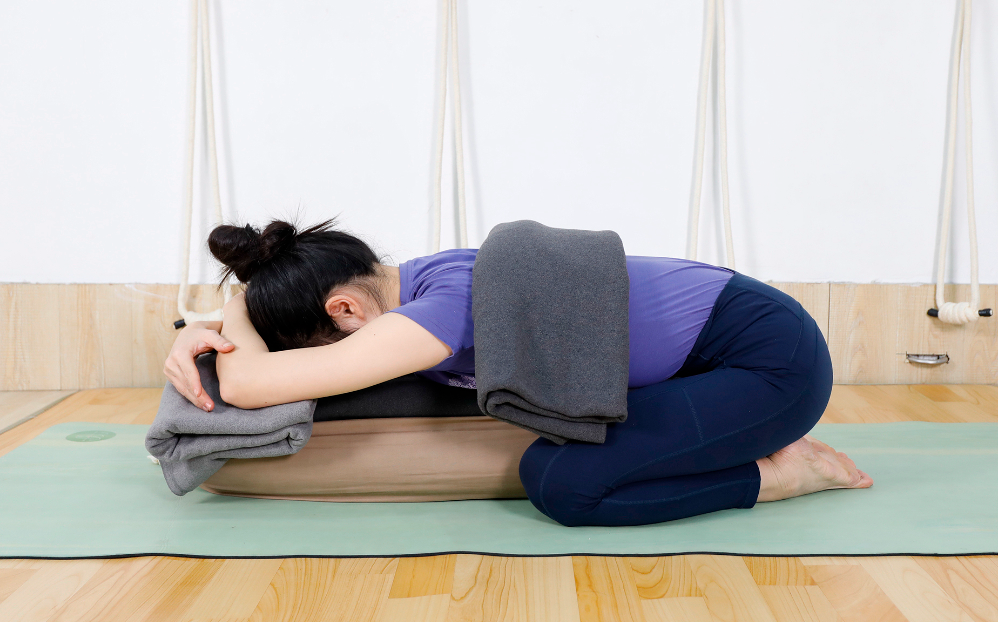
PropsIf entering the pose is difficult, you can add extra height to the bolster to allow the chest to lower more easily. If entering the pose is difficult, you can add extra height to the bolster to allow the chest to lower more easily.
Benefits: This is an extremely relaxing pose that calms the brain. It helps reduce stress, soothe the nervous system, and aids in meditation.
Key PointsAvoid this pose if you have urinary incontinence. If you suffer from migraines or tension headaches, wrap a soft cloth around your forehead and eyes for relief. Do not lift the hips during the pose; keep the lower back stable while extending the torso and arms forward. Hold the pose for 30-60 seconds.
Supported Bridge Pose Shoulder Stand (Setu Bandha Sarvangasana)
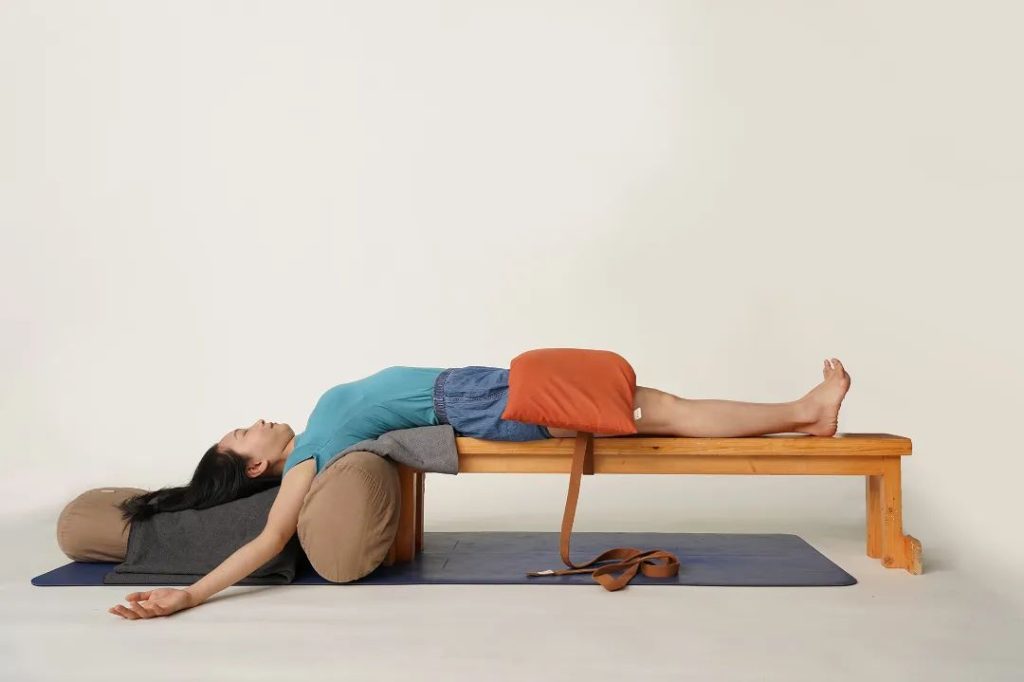
PropsOptionally, you can add a heavy sandbag. The bench helps stretch the legs and hips while keeping the back in a backbend. The cross-shaped bolsters, covered with a folded blanket, support the head and neck. The cross-shaped bolsters, covered with a folded blanket, support the head and neck. If needed, you can adjust the bolster height and stability by wrapping it with a blanket. The yoga strap helps keep the legs together without tension, and the weight of the sandbag can help release pressure from the torso.
Benefits: This pose calms the brain, expands the chest, and helps prevent fluctuations in blood pressure. It also quiets the mind and stabilises overwhelming thoughts. It also quiets the mind and stabilises overwhelming thoughts.
Key Points: In the final pose, ensure that the lower back is resting firmly against the edge of the bench. Hold the pose for 3 minutes initially, gradually extending the time to 5-8 minutes as you progress. Hold the pose for 3 minutes initially, gradually extend the time to 5-8 minutes as you progress.
Downward-Facing Easy Pose (Adho Mukha Sukhasana)
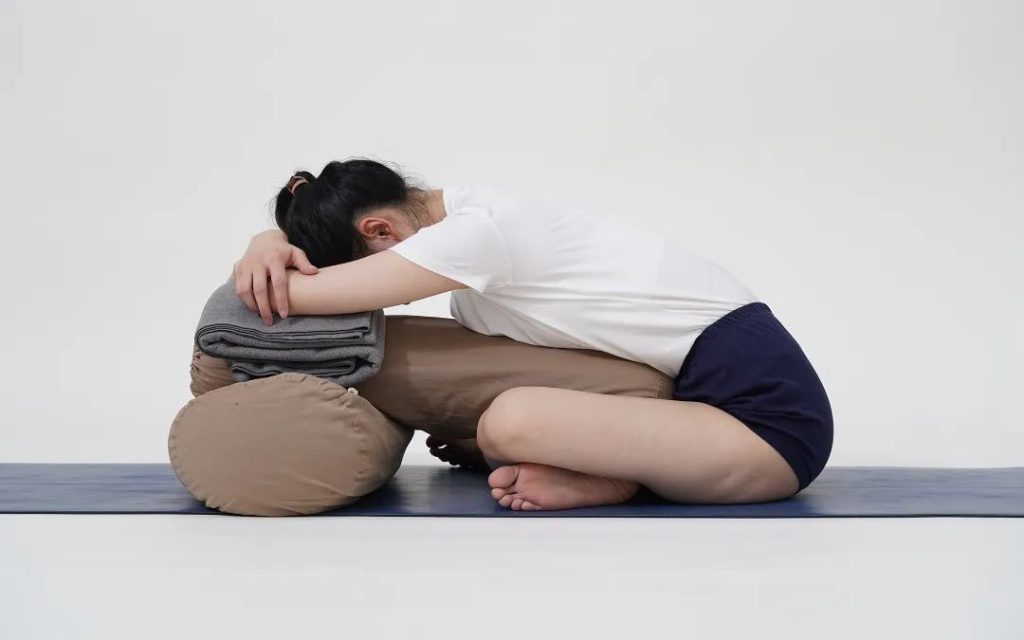
PropsFor those with stiff bodies, a folded blanket can be placed under the hips to make forward bending easier. The cross-stacked bolsters support the chest, while the blanket supports the head, preventing neck strain. For those with stiff bodies, a folded blanket can be placed under the hips to make forward bending easier.
BenefitsThis pose is extremely relaxing, relieving tension in the back, neck, and heart. It also helps alleviate premenstrual symptoms. particularly beneficial for those who experience anxiety, stress, or emotional fluctuations.
Key Points: If you are unable to sit in Hero Pose due to foot pain, you can substitute it with this pose. If you suffer from tension headaches or migraines, wrap a soft cloth around your eyes. If you suffer from tension headaches or migraines, wrap a soft cloth around your eyes.
Legs-Up-the-Wall Pose (Viparita Karani)
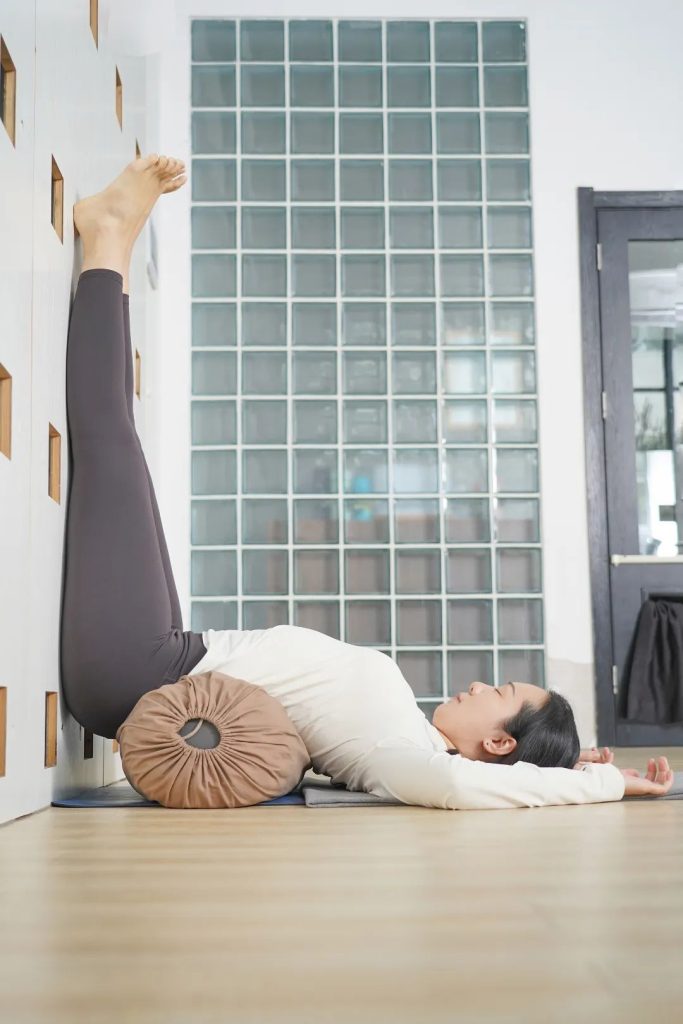
PropsThe wall supports the legs, while the bolsters support the back and hips. The wooden block placed between the wall and bolster creates space to slightly lower the hips. The wooden block placed between the wall and bolster creates space to slightly lower the hips. The blanket wraps around the bolsters and block, creating a stable setup.
BenefitsThis pose can help alleviate palpitations, regulate blood pressure, and assist in treating heart conditions. This pose can help alleviate palpitations, regulate blood pressure, and assist in treating heart conditions.
Key Points: While this pose can help relieve menstrual irregularities at other times, it should not be practiced during menstruation. Ensure that the neck and shoulders rest firmly on the ground.
For individuals with low blood pressure, yoga is indeed a gentle and effective form of exercise, but it is not a cure-all solution. To truly improve blood pressure levels, yoga practice needs to be combined with a healthy lifestyle. To truly improve blood pressure levels, yoga practice needs to be combined with a healthy lifestyle.
Maintaining a yoga routine is an attitude, and turning it into a habit is one of the easiest ways to achieve a high-quality life and a healthy body. Practice should be gradual, with difficulty increasing slowly over time. Practice should be gradual, with difficulty increasing slowly over time.
From : Iyengar Life & https://shiningladies.com/